-
 Bitcoin
Bitcoin $105,213.9543
-1.43% -
 Ethereum
Ethereum $2,534.1529
-5.66% -
 Tether USDt
Tether USDt $1.0004
0.02% -
 XRP
XRP $2.1293
-3.62% -
 BNB
BNB $651.6070
-1.04% -
 Solana
Solana $145.6637
-5.96% -
 USDC
USDC $0.9996
-0.01% -
 Dogecoin
Dogecoin $0.1768
-4.52% -
 TRON
TRON $0.2701
-0.48% -
 Cardano
Cardano $0.6330
-5.47% -
 Hyperliquid
Hyperliquid $41.0199
-0.92% -
 Sui
Sui $3.0216
-7.45% -
 Bitcoin Cash
Bitcoin Cash $435.1142
1.00% -
 Chainlink
Chainlink $13.1295
-7.22% -
 UNUS SED LEO
UNUS SED LEO $9.0033
1.58% -
 Stellar
Stellar $0.2582
-4.32% -
 Avalanche
Avalanche $19.0562
-7.26% -
 Toncoin
Toncoin $2.9869
-4.96% -
 Shiba Inu
Shiba Inu $0.0...01192
-3.81% -
 Hedera
Hedera $0.1561
-5.81% -
 Litecoin
Litecoin $84.9066
-3.04% -
 Polkadot
Polkadot $3.7754
-5.29% -
 Ethena USDe
Ethena USDe $1.0002
-0.02% -
 Monero
Monero $308.5756
-4.32% -
 Dai
Dai $0.9997
-0.01% -
 Bitget Token
Bitget Token $4.5027
-2.45% -
 Uniswap
Uniswap $7.3970
-4.96% -
 Pepe
Pepe $0.0...01090
-7.41% -
 Aave
Aave $279.5603
-5.99% -
 Pi
Pi $0.5658
-8.02%
Is the appearance of MACD golden cross a buy signal? How high is the probability of subsequent rise?
The MACD golden cross, a bullish signal, suggests a potential buying opportunity when the MACD line crosses above the signal line, but its reliability varies with market conditions.
Jun 11, 2025 at 09:14 pm

Understanding the MACD Indicator
The Moving Average Convergence Divergence (MACD) is a trend-following momentum indicator that shows the relationship between two moving averages of a security's price. The MACD is calculated by subtracting the 26-period Exponential Moving Average (EMA) from the 12-period EMA. The result of this calculation is the MACD line. A nine-day EMA of the MACD, called the "signal line," is then plotted on top of the MACD line, which can function as a trigger for buy and sell signals.
What is a MACD Golden Cross?
A MACD golden cross occurs when the MACD line crosses above the signal line. This event is considered a bullish signal by many traders, indicating that the short-term momentum is increasing relative to the long-term momentum. The golden cross is often interpreted as a potential buying opportunity because it suggests that the upward momentum may continue.
Is the MACD Golden Cross a Buy Signal?
While the MACD golden cross is generally viewed as a buy signal, its reliability can vary depending on several factors. The appearance of a golden cross can indeed suggest that a bullish trend might be starting, but it is crucial to consider other technical indicators and market conditions before making a trading decision. For instance, if the golden cross occurs during a period of high volatility or in the context of a broader bearish market, its significance as a buy signal might be diminished.
Probability of Subsequent Rise After a MACD Golden Cross
The probability of a subsequent rise following a MACD golden cross can be influenced by various elements, including the asset's historical performance, market sentiment, and overall market trends. Historical data suggests that a golden cross can be a reliable indicator of an upcoming bullish trend, but it is not a guarantee. Studies have shown that, on average, stocks and cryptocurrencies tend to experience a rise in value after a golden cross, but the extent and duration of this rise can vary widely.
Factors Influencing the Effectiveness of a MACD Golden Cross
Several factors can affect the effectiveness of a MACD golden cross as a buy signal:
- Market Conditions: The overall market environment plays a significant role. A golden cross in a bullish market is more likely to lead to a sustained rise than one in a bearish market.
- Volume: An increase in trading volume accompanying the golden cross can confirm the strength of the bullish signal.
- Other Technical Indicators: Confirming the golden cross with other indicators, such as the Relative Strength Index (RSI) or Bollinger Bands, can increase the reliability of the signal.
- Timeframe: The timeframe on which the golden cross occurs can also impact its significance. A golden cross on a daily chart might have different implications than one on a weekly or monthly chart.
Using the MACD Golden Cross in Cryptocurrency Trading
In the context of cryptocurrency trading, the MACD golden cross can be a valuable tool for traders looking to capitalize on short-term price movements. Here’s a step-by-step guide on how to identify and use a MACD golden cross in your trading strategy:
- Open your trading platform: Ensure you have access to a charting platform that supports technical analysis, such as TradingView or a similar service.
- Select the cryptocurrency pair: Choose the cryptocurrency pair you wish to analyze, such as BTC/USD or ETH/BTC.
- Add the MACD indicator: Locate the indicators section and add the MACD to your chart. The default settings are usually 12, 26, and 9, but you can adjust these if needed.
- Monitor the MACD lines: Watch for the MACD line (the faster line) to cross above the signal line (the slower line). This crossing is the golden cross.
- Confirm with other indicators: Before executing a trade based on the golden cross, consider other indicators like RSI or volume to confirm the bullish signal.
- Set your entry and exit points: Decide on your entry point based on the golden cross and set stop-loss and take-profit levels to manage your risk.
- Execute the trade: Once all conditions are met, enter your buy order and monitor the trade according to your strategy.
Limitations and Risks of Relying on the MACD Golden Cross
While the MACD golden cross can be a useful tool, it is not without its limitations and risks. False signals can occur, especially in choppy or sideways markets, where the MACD lines might cross frequently without leading to a sustained trend. Additionally, the lag inherent in moving averages means that the golden cross might occur after a significant portion of the price move has already happened, potentially reducing the profitability of the trade.
Practical Example of a MACD Golden Cross in Cryptocurrency
To illustrate the concept, let's consider a hypothetical scenario involving Bitcoin (BTC). Suppose that on a daily chart, the MACD line crosses above the signal line at a price of $30,000. This golden cross suggests a potential bullish trend. If the RSI also indicates that BTC is not overbought and the trading volume increases, this could strengthen the case for a buy signal. A trader might then enter a long position at $30,000, setting a stop-loss at $29,000 and a take-profit at $32,000, based on their risk management strategy.
Frequently Asked Questions
Q: Can the MACD golden cross be used effectively on all timeframes?
A: The effectiveness of the MACD golden cross can vary across different timeframes. On shorter timeframes, such as hourly charts, the golden cross might generate more frequent signals, but these could be less reliable due to increased market noise. Conversely, on longer timeframes like weekly or monthly charts, the signals might be more reliable but less frequent, requiring more patience from the trader.
Q: How can I combine the MACD golden cross with other indicators for better results?
A: Combining the MACD golden cross with other indicators can enhance its reliability. For instance, using the RSI to confirm that the asset is not overbought when the golden cross occurs can help avoid entering a trade at a peak. Additionally, observing the trading volume can provide further confirmation; a significant increase in volume alongside the golden cross suggests stronger buying pressure.
Q: Is it possible to use the MACD golden cross for short selling?
A: Yes, the MACD golden cross can be adapted for short selling by looking for the opposite signal, known as the MACD death cross. This occurs when the MACD line crosses below the signal line, indicating a potential bearish trend. Traders can use this signal to enter short positions, following a similar process of confirmation with other indicators and setting appropriate risk management levels.
Q: How often should I check for a MACD golden cross?
A: The frequency of checking for a MACD golden cross depends on your trading strategy and timeframe. Day traders might check for signals on hourly or 4-hour charts multiple times a day, while swing traders might monitor daily or weekly charts less frequently. It's important to balance the need for timely signals with the risk of over-trading based on short-term fluctuations.
Disclaimer:info@kdj.com
The information provided is not trading advice. kdj.com does not assume any responsibility for any investments made based on the information provided in this article. Cryptocurrencies are highly volatile and it is highly recommended that you invest with caution after thorough research!
If you believe that the content used on this website infringes your copyright, please contact us immediately (info@kdj.com) and we will delete it promptly.
- 5 Cryptos With Massive Upside Potential in the Second Half of 2025
- 2025-06-14 03:50:12
- Snorter Token (SNORT) Price Pumps 5% After Raising $698K In Presale
- 2025-06-14 03:50:12
- Almost a Third of Bitcoin's Supply Is Held by Centralized Treasuries
- 2025-06-14 03:45:12
- GameStop-Themed Meme Coin (GME) Soars 532% After the Video Game Retailer Announces $1.75B Notes Offering
- 2025-06-14 03:45:12
- Bitcoin (BTC) persists in a well-defined bullish structure but recent activity in spot and derivatives markets suggests a temporary
- 2025-06-14 03:40:12
- Farcaster Pro OG NFT: Claim Your Exclusive Digital Reward
- 2025-06-14 03:40:12
Related knowledge
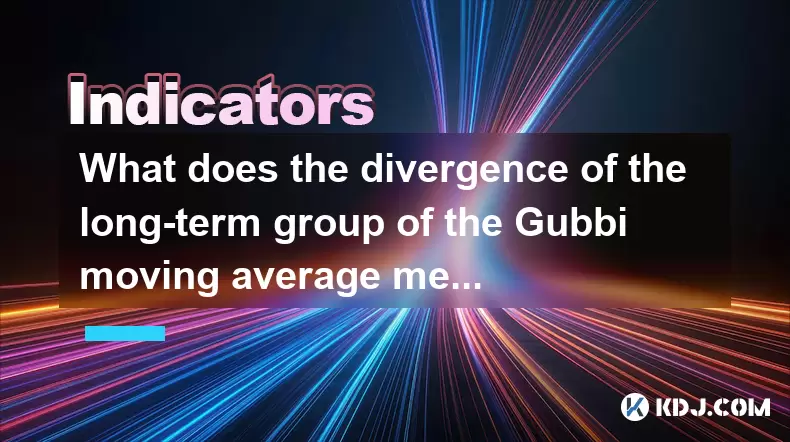
What does the divergence of the long-term group of the Gubbi moving average mean? How long can the trend last?
Jun 14,2025 at 02:56am
Understanding the Gubbi Moving AverageThe Gubbi moving average is a technical indicator used by traders in cryptocurrency markets to identify trends and potential reversals. Unlike traditional moving averages, the Gubbi variant incorporates unique calculations that emphasize price momentum and volatility adjustments. This makes it particularly useful fo...
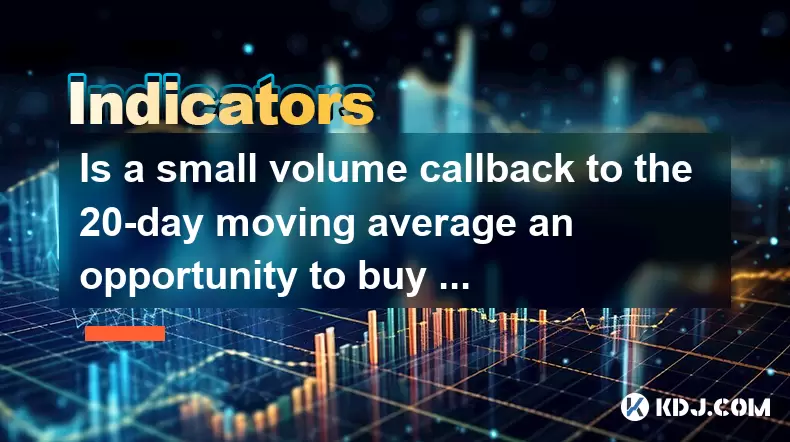
Is a small volume callback to the 20-day moving average an opportunity to buy low? What is the key to look at?
Jun 14,2025 at 02:28am
Understanding the 20-Day Moving Average in Cryptocurrency TradingIn cryptocurrency trading, the 20-day moving average (20DMA) is a commonly used technical indicator that helps traders assess the short-term trend of an asset. It calculates the average price of a cryptocurrency over the last 20 days and smooths out price volatility. When a coin experience...
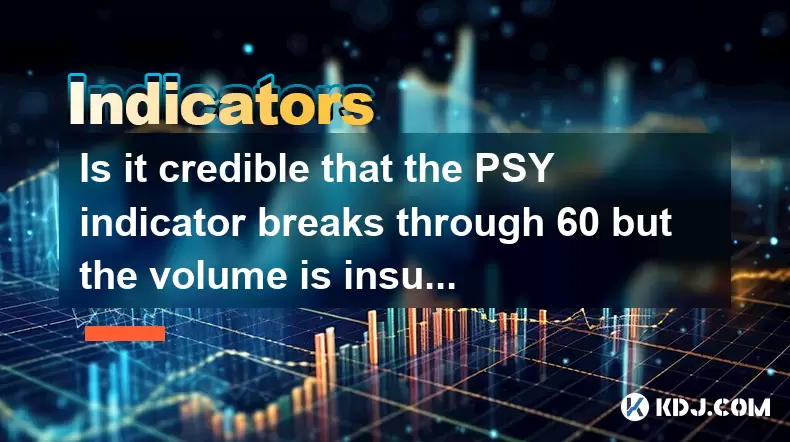
Is it credible that the PSY indicator breaks through 60 but the volume is insufficient?
Jun 14,2025 at 12:14am
Understanding the PSY Indicator in Cryptocurrency TradingThe Psychological Line (PSY) indicator is a momentum oscillator used primarily to measure the sentiment of traders and investors in financial markets, including the cryptocurrency space. It calculates the ratio of days where prices closed higher versus lower over a specified period, typically 12 o...
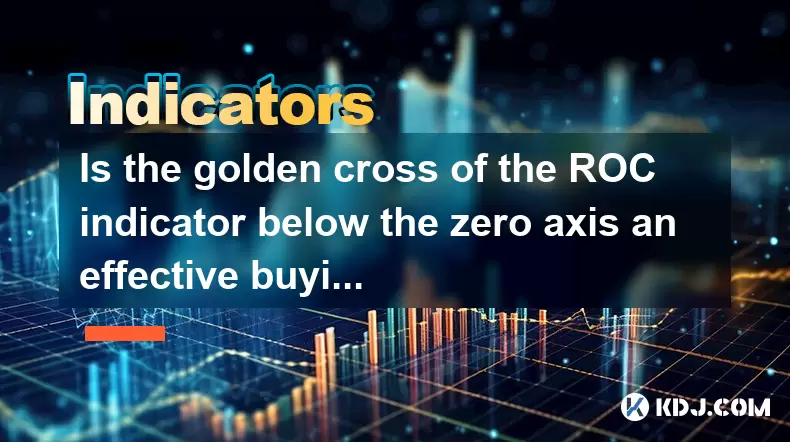
Is the golden cross of the ROC indicator below the zero axis an effective buying point?
Jun 14,2025 at 01:29am
Understanding the ROC Indicator and Its SignificanceThe Rate of Change (ROC) indicator is a momentum oscillator used in technical analysis to measure the percentage change in price between the current closing price and the closing price from a set number of periods ago. This tool helps traders assess the speed at which prices are changing, offering insi...
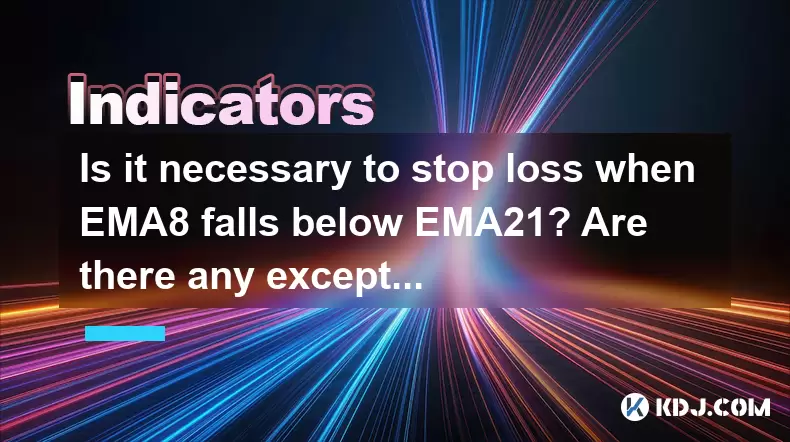
Is it necessary to stop loss when EMA8 falls below EMA21? Are there any exceptions?
Jun 14,2025 at 02:42am
Understanding EMA8 and EMA21 in Cryptocurrency TradingIn cryptocurrency trading, Exponential Moving Averages (EMAs) are widely used technical indicators to identify trends and potential reversal points. The EMA8 refers to the 8-period exponential moving average, while EMA21 is the 21-period EMA. These tools help traders make informed decisions by smooth...

Will the RSI fall after the top divergence? How to improve the judgment accuracy?
Jun 13,2025 at 11:21pm
Understanding RSI and Top Divergence in Cryptocurrency TradingThe Relative Strength Index (RSI) is a momentum oscillator widely used in cryptocurrency trading to measure the speed and change of price movements. It typically ranges from 0 to 100, with levels above 70 considered overbought and below 30 considered oversold. In crypto markets, where volatil...

What does the divergence of the long-term group of the Gubbi moving average mean? How long can the trend last?
Jun 14,2025 at 02:56am
Understanding the Gubbi Moving AverageThe Gubbi moving average is a technical indicator used by traders in cryptocurrency markets to identify trends and potential reversals. Unlike traditional moving averages, the Gubbi variant incorporates unique calculations that emphasize price momentum and volatility adjustments. This makes it particularly useful fo...

Is a small volume callback to the 20-day moving average an opportunity to buy low? What is the key to look at?
Jun 14,2025 at 02:28am
Understanding the 20-Day Moving Average in Cryptocurrency TradingIn cryptocurrency trading, the 20-day moving average (20DMA) is a commonly used technical indicator that helps traders assess the short-term trend of an asset. It calculates the average price of a cryptocurrency over the last 20 days and smooths out price volatility. When a coin experience...

Is it credible that the PSY indicator breaks through 60 but the volume is insufficient?
Jun 14,2025 at 12:14am
Understanding the PSY Indicator in Cryptocurrency TradingThe Psychological Line (PSY) indicator is a momentum oscillator used primarily to measure the sentiment of traders and investors in financial markets, including the cryptocurrency space. It calculates the ratio of days where prices closed higher versus lower over a specified period, typically 12 o...

Is the golden cross of the ROC indicator below the zero axis an effective buying point?
Jun 14,2025 at 01:29am
Understanding the ROC Indicator and Its SignificanceThe Rate of Change (ROC) indicator is a momentum oscillator used in technical analysis to measure the percentage change in price between the current closing price and the closing price from a set number of periods ago. This tool helps traders assess the speed at which prices are changing, offering insi...

Is it necessary to stop loss when EMA8 falls below EMA21? Are there any exceptions?
Jun 14,2025 at 02:42am
Understanding EMA8 and EMA21 in Cryptocurrency TradingIn cryptocurrency trading, Exponential Moving Averages (EMAs) are widely used technical indicators to identify trends and potential reversal points. The EMA8 refers to the 8-period exponential moving average, while EMA21 is the 21-period EMA. These tools help traders make informed decisions by smooth...

Will the RSI fall after the top divergence? How to improve the judgment accuracy?
Jun 13,2025 at 11:21pm
Understanding RSI and Top Divergence in Cryptocurrency TradingThe Relative Strength Index (RSI) is a momentum oscillator widely used in cryptocurrency trading to measure the speed and change of price movements. It typically ranges from 0 to 100, with levels above 70 considered overbought and below 30 considered oversold. In crypto markets, where volatil...
See all articles

























































































